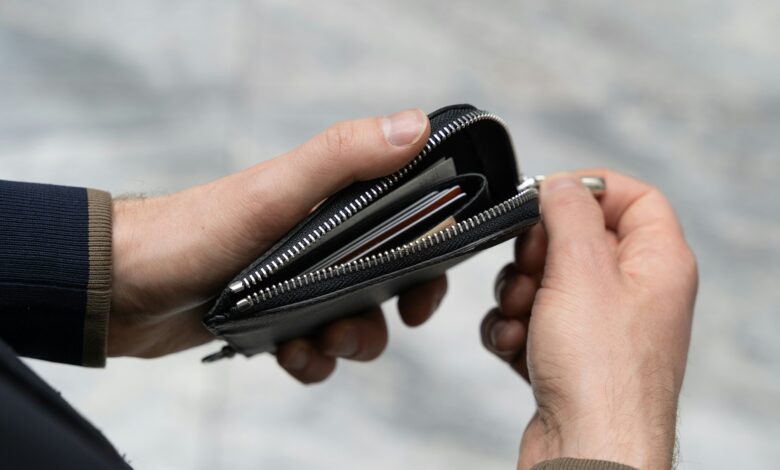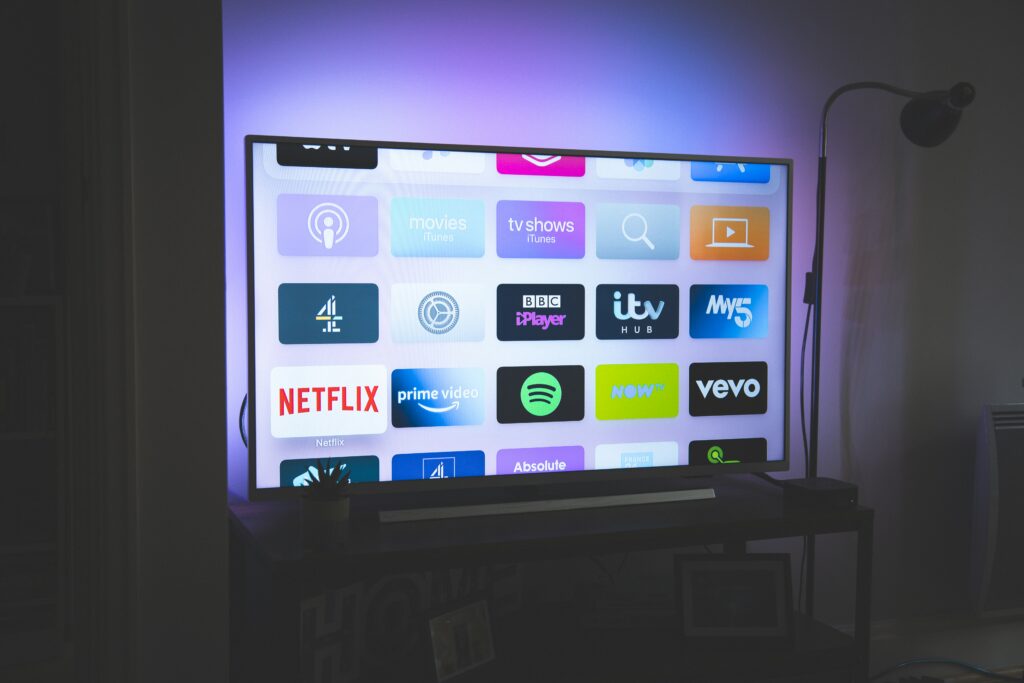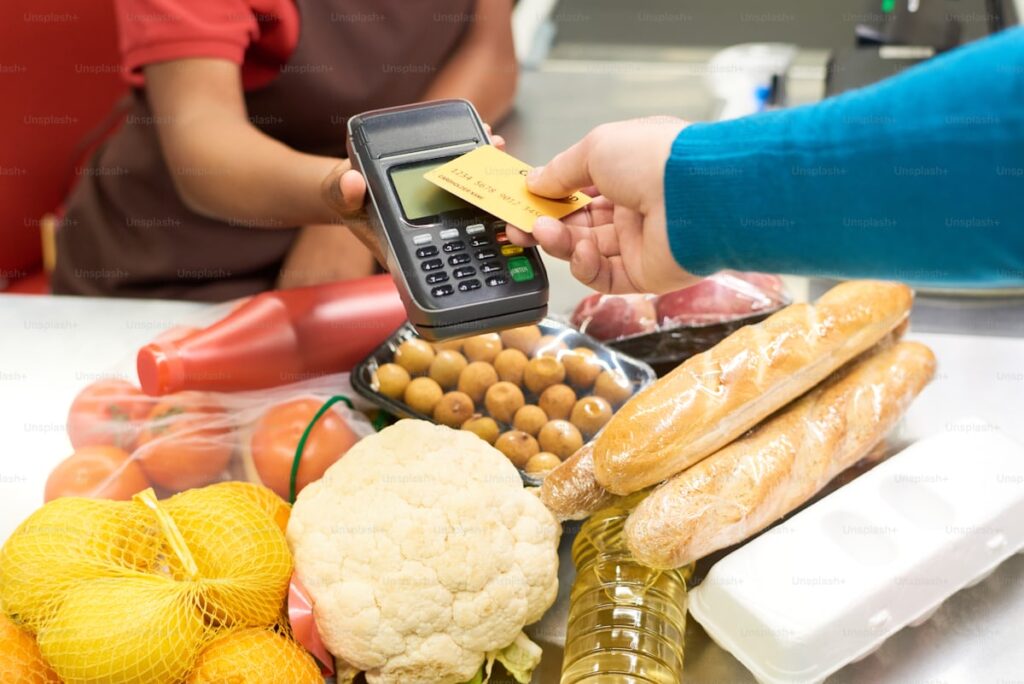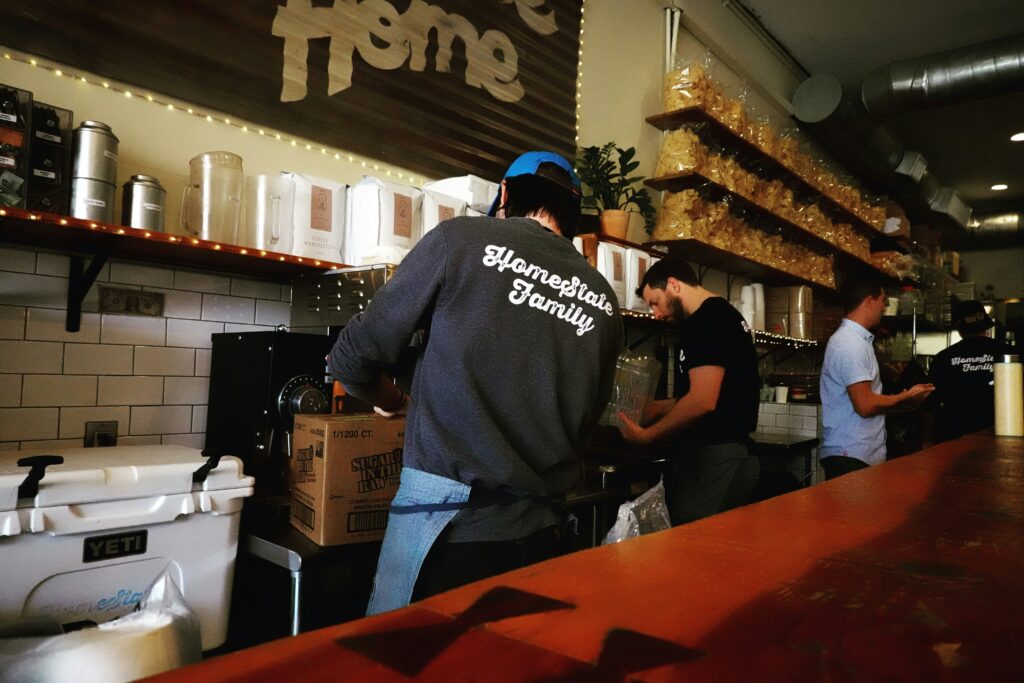Things to Cut from Your Budget: 20 Money Drains Sabotaging Your Financial Goals

Looking at your bank statement and wondering where all your money went? Trust me, you’re not alone. Budget cuts became my lifeline when I realized I was spending $400 monthly on stuff I barely noticed or used.
My wake-up call came during a particularly brutal financial review. I’d been complaining about not having enough money for an emergency fund, yet I found myself paying for three streaming services I rarely watched and buying lunch out every single day. The math hit hard: those “small” expenses totaled over $200 weekly.
Things to cut from your budget aren’t just about penny-pinching. They’re about redirecting money from mindless spending toward goals that actually matter to you. Ready to identify the sneaky budget killers draining your paycheck?
What Are Unnecessary Expenses?
Unnecessary expenses represent purchases that don’t add meaningful value to your life or support your essential needs. These sneaky budget busters often disguise themselves as “small” or “harmless” spending that accumulates into significant money drains.
Essential needs include housing, utilities, transportation, food, insurance, and minimum debt payments. Everything else falls into the “want” category, making it fair game for budget cuts when money gets tight.
The trap lies in how these expenses feel insignificant individually. A $5 coffee here, a $15 subscription there, and a $20 impulse purchase somewhere else don’t seem threatening. But they compound into hundreds or thousands of dollars annually.
Lifestyle inflation makes yesterday’s luxuries feel like today’s necessities. That premium cable package you splurged on last year now feels “normal,” making it harder to recognize as a potential cut.
Emotional spending often drives unnecessary purchases. You buy things to feel better, reward yourself, or keep up with others rather than because you genuinely need or deeply value them.
20 Things To Cut From Your Budget To Save Money
Ready to slash those budget drains? These proven money-saving cuts help you reclaim hundreds or thousands of dollars annually without sacrificing what truly matters to you.
1. Cable
Cable subscriptions represent one of the easiest and most impactful budget cuts you can make today. The average American household spends $83 monthly on cable television, totaling nearly $1,000 annually.

Streaming alternatives like Netflix, Hulu, and Disney+ provide extensive entertainment options at fraction of cable costs. Most streaming services cost $8-15 monthly compared to cable’s $80-150 average.
Internet-only plans from your current provider often cost 40-60% less than cable bundles. Contact your provider to explore standalone internet options that maintain your connection without expensive television add-ons.
Over-the-air antennas capture local broadcast channels for free, providing news, sports, and basic entertainment without monthly fees. Modern antennas offer surprisingly good reception and channel variety.
Content evaluation reveals most households watch only 10-15% of available cable channels regularly. Why pay for 200+ channels when you actively watch fewer than 20?
2. Memberships And Subscriptions
Subscription creep happens gradually as you accumulate various memberships that seemed reasonable individually but create significant collective costs.

Gym memberships averaging $35-50 monthly often go unused after initial motivation fades. Home workout alternatives include YouTube fitness channels, workout apps, and basic equipment purchases that provide lifetime value.
Magazine subscriptions pile up unread while automatically renewing annually. Digital alternatives through library systems or free online content provide similar information without ongoing costs.
Streaming service audits help identify overlapping or unused subscriptions. Many households maintain 3-5 streaming services simultaneously, spending $40-75 monthly for more content than they can possibly consume.
Auto-renewal traps make it easy to forget about subscriptions you no longer use. Set calendar reminders to evaluate each subscription before renewal periods.
3. Eating Out
Restaurant spending represents the biggest budget drain for most American households, averaging $3,200 annually according to Bureau of Labor Statistics data.

Meal prep strategies dramatically reduce food costs while improving nutrition and saving time. Sunday meal prep sessions can prepare entire weeks’ worth of lunches and dinners efficiently.
Cost comparisons reveal restaurant meals cost 300-500% more than equivalent home-cooked versions. That $12 restaurant salad costs under $3 to make at home with better ingredients.
Convenience solutions like slow cookers, instant pots, and meal delivery kits provide middle-ground options between full restaurant dining and extensive cooking from scratch.
Social dining alternatives include potluck gatherings, home dinner parties, and picnic outings that maintain social connections without expensive restaurant bills.
4. Home And Auto Insurance
Insurance shopping annually can save 15-30% on premiums without reducing coverage quality. Loyalty penalties mean long-term customers often pay higher rates than new customers receive.

Bundle evaluations sometimes provide savings, but individual policies from different companies frequently cost less than convenience bundles from single providers.
Deductible adjustments significantly impact premium costs. Raising deductibles from $250 to $1,000 can reduce premiums by 20-25% while requiring only modest emergency fund increases.
Coverage audits help eliminate unnecessary add-ons and ensure adequate protection for current circumstances. Life changes like paid-off cars or increased home values require coverage adjustments.
Comparison websites like Progressive, Geico, and State Farm make annual shopping convenient and comprehensive.
5. Cell Phones
Cell phone costs have exploded as unlimited plans and premium devices became standard. Average households spend $120-200 monthly on phone services that provide far more than most people need.

Budget carriers like Mint Mobile, Visible, and Cricket offer identical network coverage at 40-60% lower costs than major carriers.
Plan downgrades eliminate expensive unlimited data for households using under 10GB monthly. WiFi reliance at home and work reduces actual data needs significantly for most users.
Device financing creates artificial monthly costs for phones you could purchase outright or keep using longer. Upgrade cycles every 2-3 years cost thousands annually compared to using phones until they stop functioning.
Family plan optimization can reduce per-line costs while maintaining service quality. However, budget carriers often provide better value than family discounts from premium carriers.
6. Entertainment
Entertainment spending averages $2,500 annually per household, yet creative alternatives provide similar enjoyment at minimal cost.
Free activities abound in most communities through parks, libraries, festivals, and cultural centers. Library systems offer free books, movies, events, and even streaming service access.
Home entertainment options like game nights, movie marathons, and hobby projects create memorable experiences without ticket prices, parking fees, and concession costs.
Seasonal activities like hiking, beach visits, and outdoor concerts provide expensive entertainment value at minimal cost. Nature access remains free in most locations.
Social alternatives include hosting gatherings instead of meeting at expensive venues, organizing potluck parties, and creating entertainment cooperatives with friends.
7. New Clothes
Clothing budgets often lack planning, leading to impulse purchases that create closet clutter without improving your wardrobe significantly.
Capsule wardrobes focus on fewer, higher-quality pieces that mix and match effectively. Cost per wear calculations reveal expensive items become affordable when used frequently.
Shopping strategies include waiting periods for non-essential purchases, seasonal clearance sales, and thrift store exploration for unique finds.
Clothing care extends garment life significantly through proper washing, storage, and minor repairs. Quality maintenance costs far less than frequent replacements.
Style evaluation helps identify your authentic preferences versus trend-driven purchases that quickly feel outdated or unworn.
8. Extra Groceries
Grocery overspending happens through poor planning, impulse purchases, and buying quantities that exceed consumption before spoilage.

Meal planning reduces waste while ensuring you purchase only needed ingredients. Shopping lists prevent impulse additions and keep you focused on planned purchases.
Store strategies include shopping perimeter sections first, avoiding hungry shopping trips, and using calculators to track spending during shopping.
Bulk buying saves money only when you’ll actually consume quantities before expiration. Storage limitations and spoilage risks often eliminate bulk purchase savings.
Generic brands typically provide 20-40% savings compared to name brands for identical or similar quality products.
9. Drinks At Restaurants
Beverage markups at restaurants often exceed 300-500% compared to grocery store prices. Family dining costs increase dramatically when everyone orders drinks.

Water benefits include better health outcomes, lower costs, and avoiding sugary beverage calories that don’t provide satiation.
Cost calculations show family of four saves $10-15 per restaurant visit by choosing water over sodas, juice, or alcoholic beverages.
Home preparation allows you to bring beverages you enjoy without paying restaurant markups. Thermos bottles keep drinks cold throughout meals.
Special occasions might warrant beverage splurges, but routine restaurant dining becomes much more affordable with water-only policies.
10. Impulse Purchases
Impulse buying destroys carefully planned budgets through unplanned spending triggered by emotions, sales pressure, or momentary desires.
Cooling-off periods help distinguish genuine needs from temporary wants. 24-48 hour rules prevent most impulse purchases by allowing excitement to subside.
Shopping list discipline means purchasing only predetermined items regardless of sales, displays, or suggestions encountered during shopping trips.
Budget tracking reveals impulse spending patterns, helping you identify triggers and develop strategies for avoiding unplanned purchases.
Need versus want evaluation questions help clarify whether purchases align with your values and financial goals or represent momentary impulses.
11. Hair And Nail Care
Beauty service costs accumulate quickly when you rely on professionals for routine maintenance you could handle at home.
DIY alternatives include home manicure kits, hair coloring products, and styling tools that provide salon-quality results after modest learning curves.
YouTube tutorials offer free professional instruction for virtually any beauty technique or style you want to achieve at home.
Cost comparisons show monthly salon visits cost $100-300 compared to $20-50 for equivalent home care products lasting several months.
Time savings often result from home beauty care since you avoid appointment scheduling, travel time, and waiting periods.
12. Car Washes
Car washing services cost $10-25 per visit, totaling $200-600 annually for regular maintenance that you can easily handle yourself.

DIY equipment includes basic supplies costing under $50 that last for dozens of washes. Quality results often exceed commercial car washes when you take time and care.
Environmental benefits include controlling water usage, choosing eco-friendly products, and avoiding chemical runoff from commercial operations.
Exercise opportunity makes car washing a productive physical activity while saving money and maintaining your vehicle properly.
Flexibility allows washing whenever convenient rather than working around business hours or weather restrictions commercial services face.
13. Bottled Water
Bottled water costs reach $1,400 annually for households consuming two bottles daily per person. Environmental impact includes massive plastic waste and transportation energy consumption.
Filter systems provide superior water quality at fraction of bottled water costs. Pitcher filters, under-sink systems, and whole-house filtration offer various price points and convenience levels.
Reusable bottles eliminate ongoing purchase costs while providing better temperature control and spill prevention than disposable bottles.
Quality comparisons often favor filtered tap water over bottled water in blind taste tests and purity analyses.
Convenience solutions include multiple reusable bottles for car, office, and home use to ensure water availability without impulse bottled water purchases.
14. Expensive Coffee
Coffee shop spending averages $1,000-2,000 annually for daily purchasers. Specialty drinks can cost $5-8 each, making this habit extremely expensive.
Home brewing equipment pays for itself within 2-3 months for daily coffee drinkers. Quality coffee makers range from $50-300 depending on features and capacity needs.
Coffee quality often improves with home brewing since you control bean selection, grind timing, and brewing parameters for optimal flavor.
Convenience solutions include programmable coffee makers, travel mugs, and workplace brewing setups that eliminate excuses for coffee shop visits.
Specialty recreations at home include flavored syrups, steamed milk techniques, and seasonal spice additions that replicate expensive coffee shop drinks.
15. Monthly Bank Fees
Banking fees represent pure waste since numerous institutions offer identical services without monthly charges or minimum balance requirements.

Free checking alternatives exist at credit unions, online banks, and community institutions that prioritize customer service over fee generation.
Fee structures often hide costs through overdraft fees, ATM charges, and service fees that dramatically increase actual banking costs beyond advertised monthly fees.
Online banking provides superior convenience, higher interest rates, and lower fees compared to traditional brick-and-mortar institutions.
Credit unions typically offer better rates, lower fees, and more personalized service than large commercial banks while providing identical federal insurance protection.
16. Overdraft Fees
Overdraft fees average $34 per occurrence and affect 85% of checking account holders annually. Repeat overdrafts can cost hundreds of dollars in unnecessary fees.
Balance monitoring through mobile apps, account alerts, and regular checking prevents most overdraft situations before they occur.
Buffer maintenance keeping $100-500 cushion in checking accounts eliminates overdraft risks while providing peace of mind for unexpected expenses.
Overdraft opt-out prevents banks from authorizing transactions that would trigger fees, causing cards to decline instead of creating expensive overdrafts.
Alternative solutions include linking savings accounts for automatic transfers or using cash-only budgeting systems that eliminate overspending possibilities.
17. Full-Price Items
Full-price shopping wastes money when identical items are available at discounts through timing, location, or method changes.
Sale cycles follow predictable patterns for most retailers. End-of-season clearances, holiday sales, and quarterly inventory reductions offer significant savings opportunities.
Price comparison tools like Honey, Rakuten, and Ibotta automatically find coupons and cashback opportunities.
Generic alternatives often provide identical quality at 20-50% lower costs than brand-name products, especially for basic necessities.
Timing strategies include shopping after holidays for decorations, end of summer for outdoor equipment, and back-to-school periods for office supplies.
18. Gifts
Gift-giving expenses can strain budgets during holidays, birthdays, and special occasions without necessarily strengthening relationships as intended.
Alternative expressions of appreciation include handwritten letters, homemade items, shared experiences, and acts of service that often mean more than purchased gifts.
Budget setting for gift giving prevents overspending driven by guilt, competition, or social pressure rather than genuine desire to show appreciation.
Experience gifts like concert tickets, restaurant certificates, or activity vouchers create lasting memories while often costing less than physical items.
Group gifting allows multiple people to contribute toward meaningful presents without individual financial strain.
19. High-Interest Credit Card Debt
Credit card debt with high interest rates creates compound financial damage that grows exponentially when you carry balances month to month.
Minimum payments barely cover interest charges, meaning balances remain virtually unchanged despite consistent payment efforts. Debt avalanche strategies focus extra payments on highest-rate debts first.
Balance transfers to 0% intro rate cards provide temporary relief but require discipline to pay off balances before promotional periods end.
Credit counseling through nonprofit organizations provides free debt management strategies and possible creditor negotiations for struggling borrowers.
Emergency fund building prevents future credit card reliance by providing cash reserves for unexpected expenses.
20. Landscaping/Gardening
Professional landscaping services cost $50-150 per visit for maintenance you can learn to handle yourself with basic tools and knowledge.
DIY landscaping provides exercise, outdoor time, and cost savings while allowing complete control over timing and methods.
Basic equipment like mowers, trimmers, and rakes require one-time purchases that pay for themselves quickly compared to ongoing service costs.
Learning resources through YouTube, extension services, and gardening communities provide free education for developing landscaping skills.
Satisfaction benefits include pride in maintaining your own property and developing practical skills that provide lifelong value.
Final Thoughts
Budget cuts aren’t about living like a monk or eliminating all enjoyment from life. Smart spending cuts redirect money from thoughtless consumption toward goals and experiences that genuinely matter to you.
Start with the easiest cuts that require minimal lifestyle adjustment, like switching to generic brands or canceling unused subscriptions. Momentum builds as you see savings accumulate and realize how little you miss eliminated expenses.
Track your progress using apps like Mint or YNAB to visualize how budget cuts improve your overall financial picture.
Remember, the goal isn’t permanent deprivation but conscious spending choices. FYI, you can always add expenses back if you discover they truly enhance your life 🙂
Which budget cut will you tackle first? Choose one item from this list, implement it this week, and watch your savings grow while your financial stress decreases.








